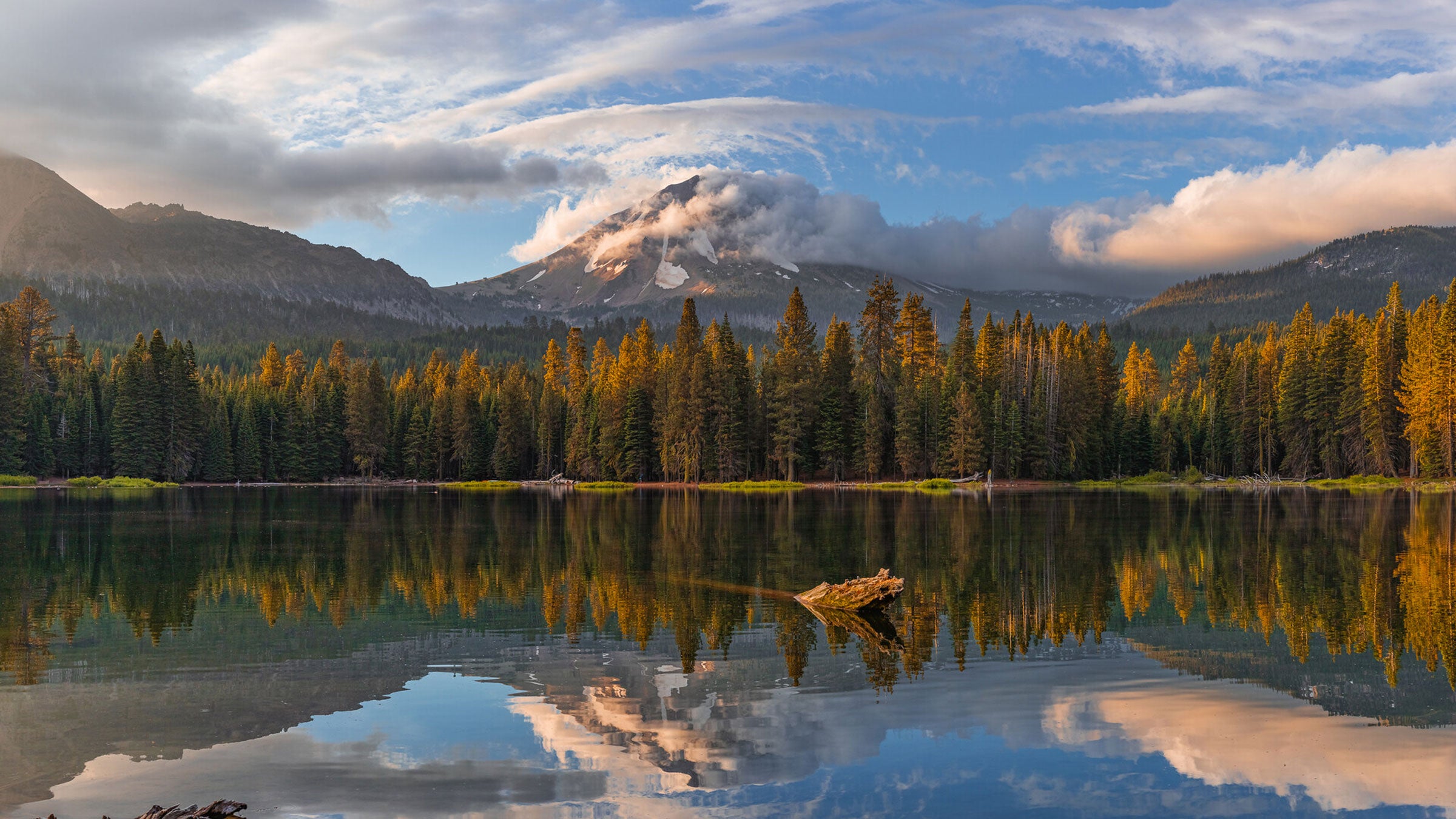Lassen Volcanic National Park

Sunrise in Lassen Volcanic National Park (Photo: Glenn Robinson)
Until you visit Lassen Volcanic National Park in northeastern California, it’s easy to assume the ground beneath our feet is static–an unchanging base for our everyday lives. But the volcanoes and hydrothermal areas of Lassen, one of the country’s oldest national parks, will quickly shift your view. The ground roils, steams and smolders, a reminder that while the volcanoes in Lassen might be dormant for now, there’s still an active world of magma and water beneath your feet.

The area around Lassen has been volcanically active for about three million years and the park’s 100,000 acres are home to all four major volcano types: shield, composite, cinder cone and plug dome. In fact, Lassen Peak is the world’s largest plug dome volcano and last erupted around 100 years ago. Scientists don’t know when it will erupt again, but they are certain that it will.
The heat from all that volcanic activity in Lassen causes a variety of hydrothermal features, including fumaroles (super-heated vents of steam and volcanic gas), mud pots, boiling pools, and steaming ground. The mud pots are highly acidic and the fumaroles smell like sulfur, so it’s not exactly a welcoming landscape. But it does possess an otherworldly beauty and inspire awe in the power of nature. Astrobiologists study the microbes that thrive in these extreme environments at Lassen to understand if similar life could have once existed on Mars, whose volcanic history is parallel to the park’s.

To view the largest hydrothermal area, take the 3-mile round-trip Bumpass Hell Trail, named for mountaineer Kendall Vanhook Bumpass, whose leg was severely burned after accidentally stepping into a mud pit. That won’t happen to you, though: a boardwalk provides close (but not too close) access to hydrothermal features in the 16-acre basin.
While it’s the phenomena under your feet that Lassen is famous for, it’s got an equally impressive display if you look up. Far from light pollution, it’s a sanctuary of natural darkness and an incredible place to view the night sky. Consider a ranger-led night sky viewing program.

Drive the Lassen Volcanic National Highway for an overview of the park landscape, a 30-mile stretch connecting the northwest and southwest park entrances. The scenic drive takes you through dense forest and past panoramic views. It crests at 8,512 feet, making it the highest paved road in the Cascade mountain range, then makes its way via switchbacks down steep volcanic slopes.
Don’t miss the Kohm Yah-mah-nee Visitor Center, one mile from the southwest entrance. There, you can participate in ranger programs, shop at the park store, grab a bite at the cafe, and learn about the park’s natural and human history.
Camping in Lassen

Camping is an excellent way to get a feel for the natural rhythms of Lassen Volcanic National Park. Five open campgrounds are located throughout: Summit Lake South, Summit Lake North, Lost Creek group camping, Butte Lake and Manzanita Lake, which also offers rustic camping cabins. The other three camping areas are closed until further notice due to damage from the 2021 Dixie Fire. All campsites have access to running water and flush toilets, but for the colder months when those amenities are unavailable, you can pay a lower fee to dry camp. Campgrounds are open approximately May or June through September or October. Precise opening and closing dates depend on snow and other conditions, so check the latest update on the park’s website. Book your camping spot ahead of time on Recreation.gov.